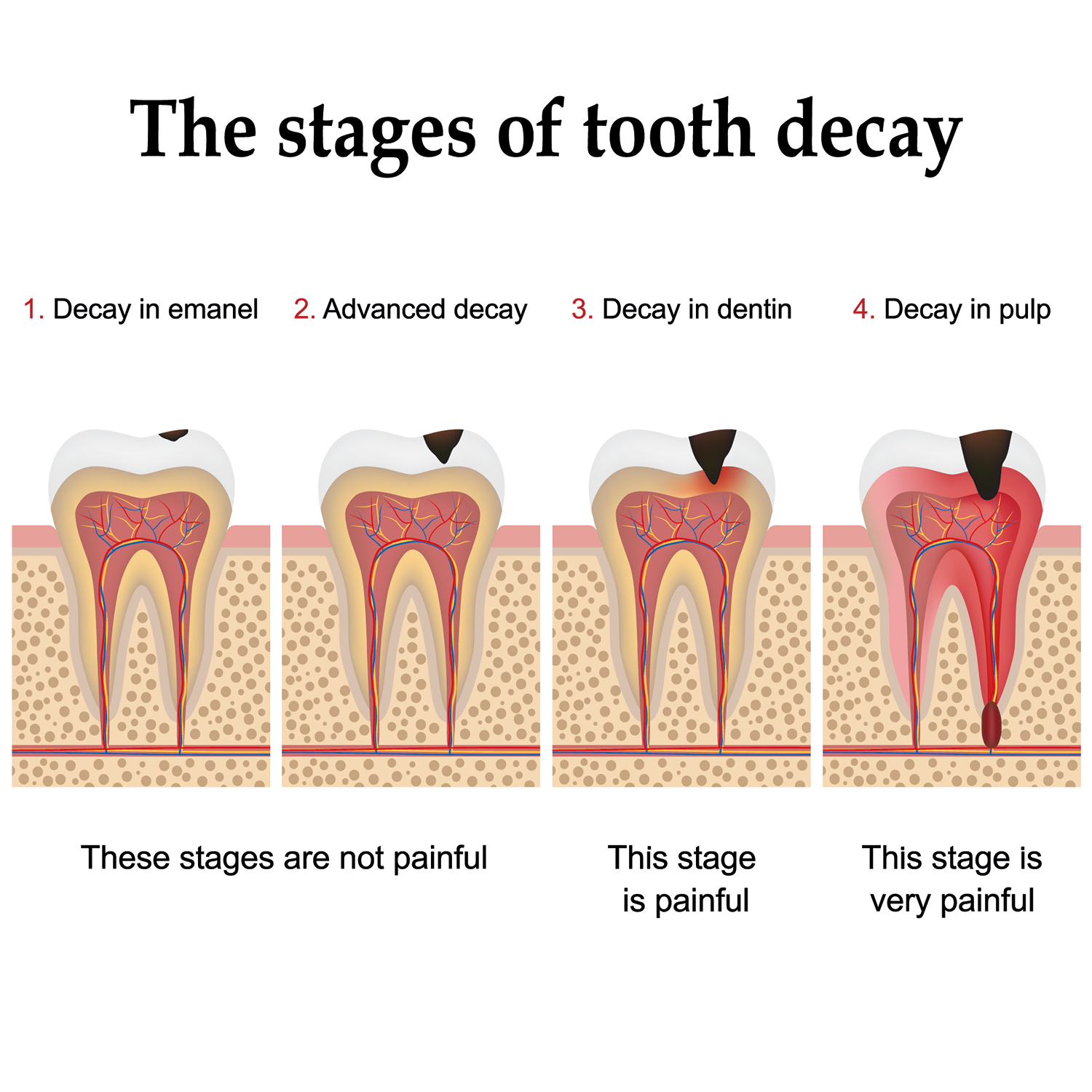What is tooth decay and how does it develop?

Tooth decay is also known as a cavity or caries. Tooth decay is the most widespread non-communicable disease in the world. A cavity is caused by the acid produced in the harmful bacteria in plaque. Within time the acid breaks through the hard surface of the tooth (the enamel) and causes a hole in the tooth. If it is untreated the hole will get larger and deeper going into the second layer of the tooth (the dentin). The longer it is untreated the greater the risk for pain.
What are the symptoms of a cavity?
Depending upon the location and the size the symptoms can vary. A very small cavity may not have any symptoms and can only be recognized by the dentist through an x-ray image. As the decay gets larger the symptoms may be:
spontaneous pain - a toothache
sensitivity to temperature (hot or cold), sensitivity to sweets or pressure
discoloration (brown, black or white on any surface of the tooth)
a visible hole
Prevention
- Brush twice daily and clean between the teeth once a day.
- ALWAYS brush before going to bed since the production of saliva is reduced while sleeping. This lowers the potential to minimize and neutralize the acid.
- Drink water instead of sugary drinks and reduce snacking between meals
- The dentist and hygienist will have tips and suggestions for dry mouth issues which can raise the risk of tooth decay
- Twice a year visits to the dentist are essential for early detection of tooth decay
What influence does sugar have on the
development of tooth decay?
Many patients believe that sugar is the main cause of tooth decay, but this is not entirely true. Actually sugar is only a co-factor that promotes the development of tooth decay. Sweet food and drinks lead to increased acid production by the bacteria, but any bacteria left on the tooth surface will affect the strength of the tooth. Good home care including brushing and cleaning between the teeth regularly and thoroughly will minimize the risk of tooth decay. Often the flat surface of the tooth is cleaned, but the sides of the teeth are left with bacteria and plaque. Thorough daily cleaning must include interdental tools.
What rules should you follow regarding your diet and when to brush your teeth to avoid tooth decay
A balanced and low-sugar diet makes an important contribution to preventing tooth decay.
When it comes to sugar intake, it helps to limit the “sugar shock” to a short period of time. A permanent sugar intake is disadvantageous.
This means: it is better to snack for 15-20 minutes at a time (short sugar shock) than to consume sugary drinks (sodas, cola) or sweets throughout the day.
Make sure you allow at least 30 minutes between consuming acidic drinks, such as spritzers, fruit juice, etc., and brushing your teeth (using a toothbrush, tufted brush, interdental brush, dental floss). In this way, your salivation can neutralize the acid film and you do not "clean" away the tooth enamel that has been dissolved by the acids.
